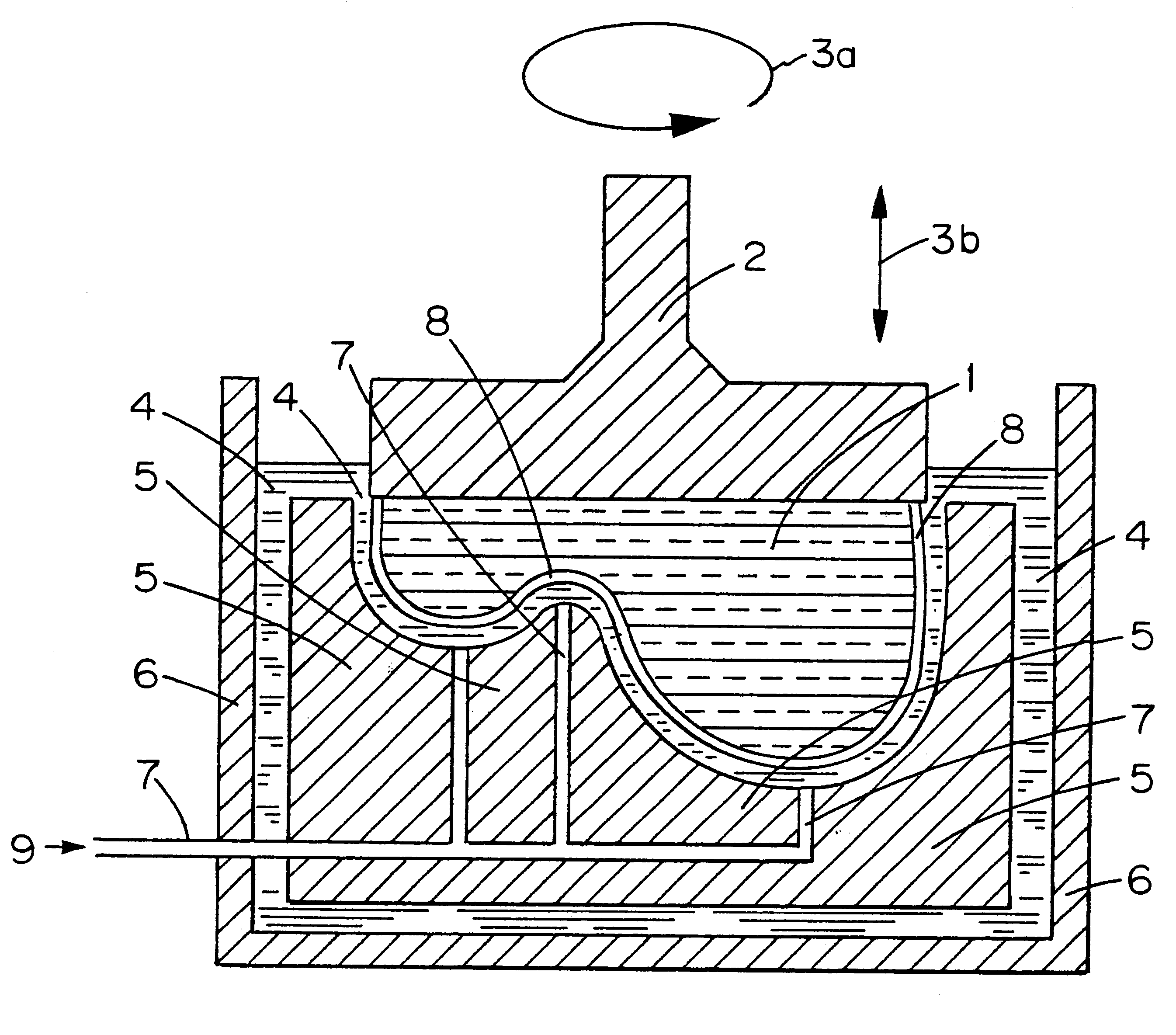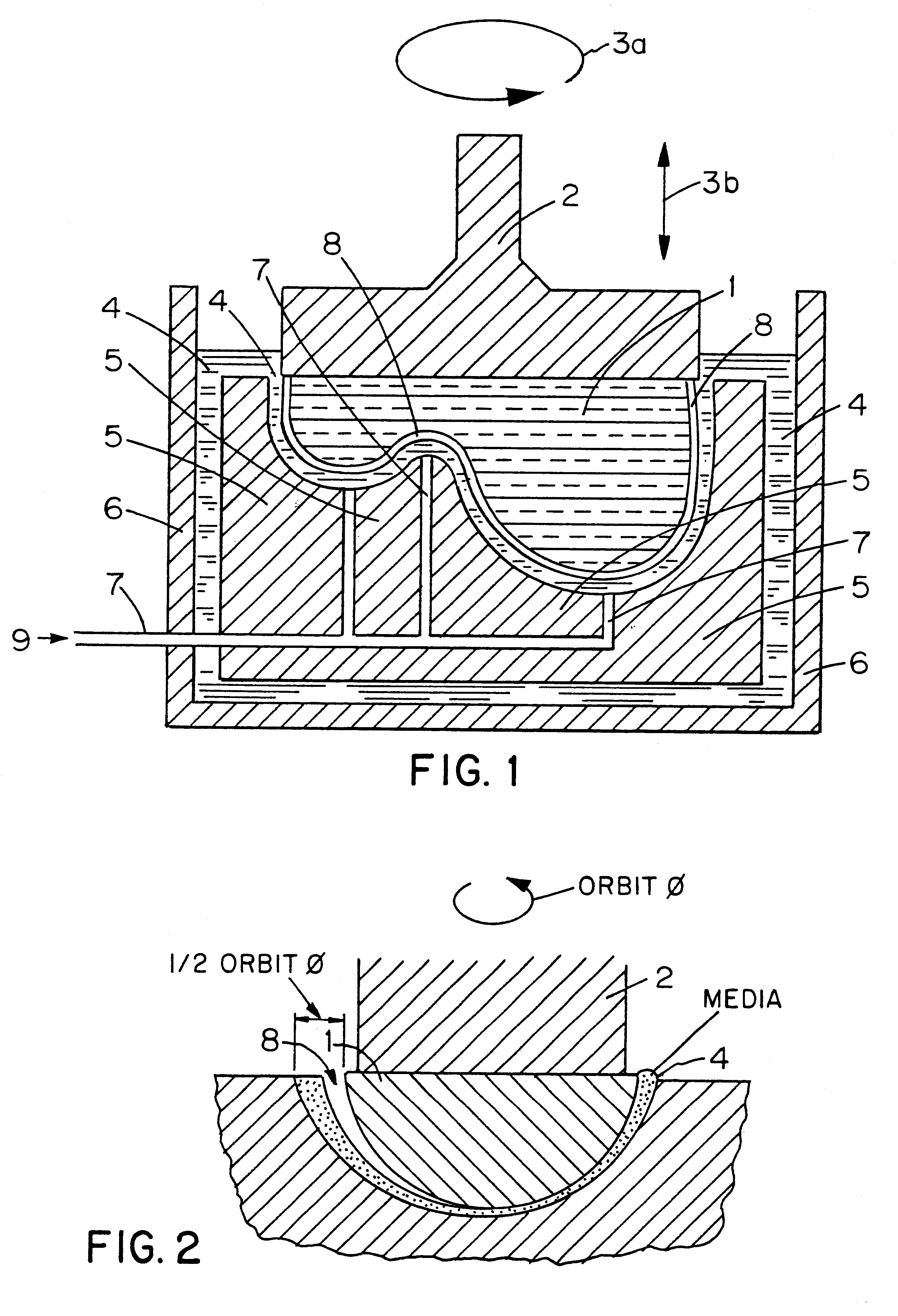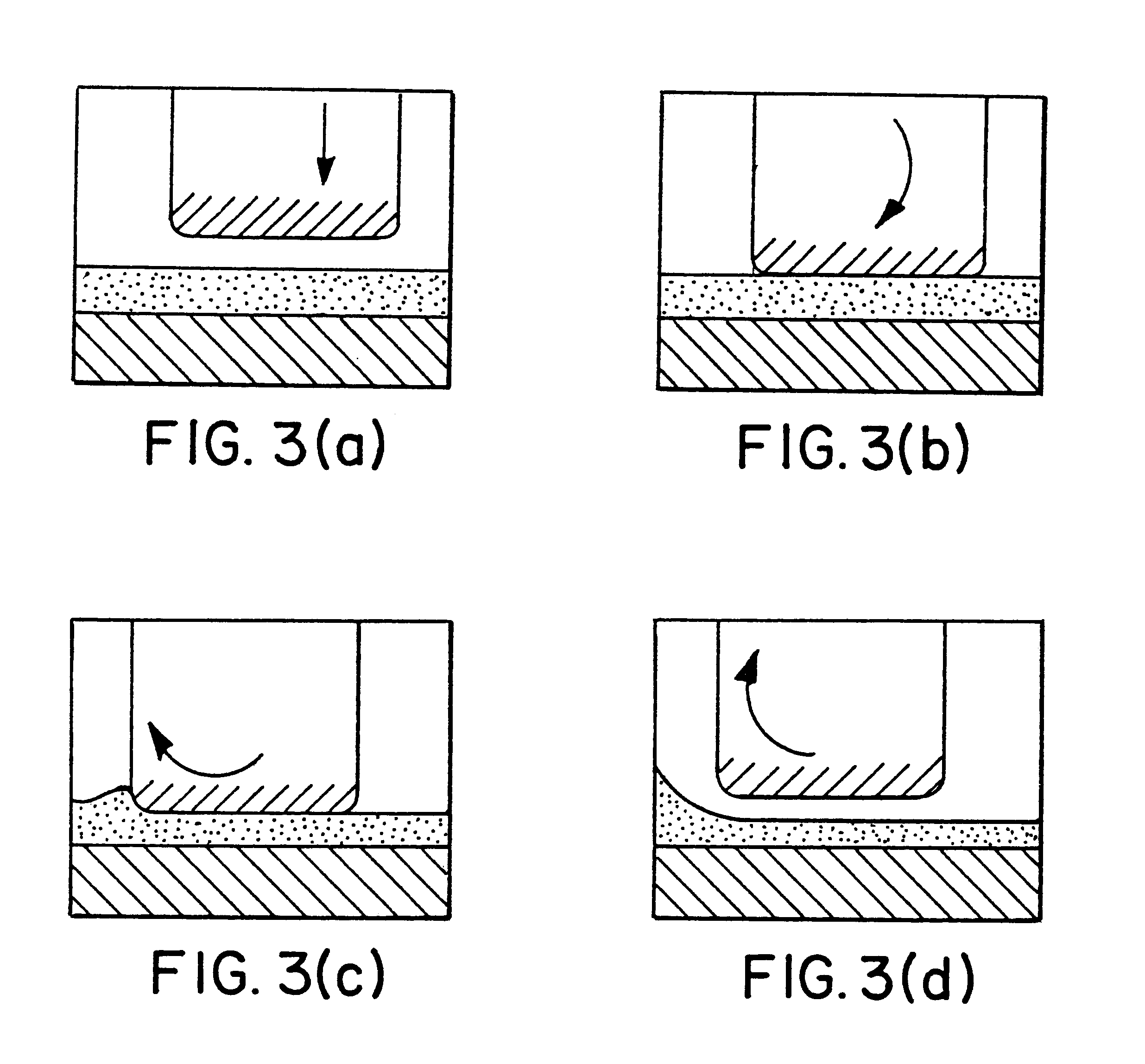Abrasive polishing method using a visco-elastic abrasive medium
- Summary
- Abstract
- Description
- Claims
- Application Information
AI Technical Summary
Benefits of technology
Problems solved by technology
Method used
Image
Examples
example 2
The apparatus illustrated in FIG. 1 was also employed to polish a plurality of forged aluminum components of having a three-dimensionally complex shape. The components as received had a surface roughness of 100 to 120 micro-inches R.sub.a. The apparatus was fitted with a displacer shaped as a complement of the shape of the components and providing a gap of 6 millimeters. The surface of the wheels were polished for 3.5 minutes, employing an orbit of 0.25 inches at a frequency of 17 Hz, employing poly(boro-siloxane) media and a 80 mesh abrasive, followed by a second polishing of 2 minutes, employing an orbit of 0.25 inches at a frequency of 17 Hz, employing poly(boro-siloxane) media and a 220 mesh abrasive. The surfaces of the wheels were measured to have a surface roughness ranging from 20 to 25 micro-inches R.sub.a as finished.
example 3
The apparatus illustrated in FIG. 1 was also employed to polish a plurality of cast aluminum a automotive wheels having a complex shape. The wheels as received had a surface roughness of 140 to 175 micro-inches R.sup.a. The apparatus was fitted with a displacer shaped as a complement of the shape of the wheels and providing a gap of 6 millimeters. The surface of the wheels were polished for 3.5 minutes, employing an orbit of 0.25 inches at a frequency of 17 Hz, employing poly(boro-siloxane) media and a 80 mesh abrasive, followed by a second polishing for 1.5 minutes, employing an orbit of 0.25 inches at a frequency of 17 Hz, employing poly(boro-siloxane) media and a 220 mesh abrasive. The surfaces of the wheels were measured to have a surface roughness ranging from 20 to 25 micro-inches R.sub.a as finished
The invention has been described herein with regard to particular preferred operating circumstances and requirements, and in a particular context. Those of ordinary skill will dear...
PUM
| Property | Measurement | Unit |
|---|---|---|
| Length | aaaaa | aaaaa |
| Fraction | aaaaa | aaaaa |
| Fraction | aaaaa | aaaaa |
Abstract
Description
Claims
Application Information
 Login to View More
Login to View More - R&D
- Intellectual Property
- Life Sciences
- Materials
- Tech Scout
- Unparalleled Data Quality
- Higher Quality Content
- 60% Fewer Hallucinations
Browse by: Latest US Patents, China's latest patents, Technical Efficacy Thesaurus, Application Domain, Technology Topic, Popular Technical Reports.
© 2025 PatSnap. All rights reserved.Legal|Privacy policy|Modern Slavery Act Transparency Statement|Sitemap|About US| Contact US: help@patsnap.com



